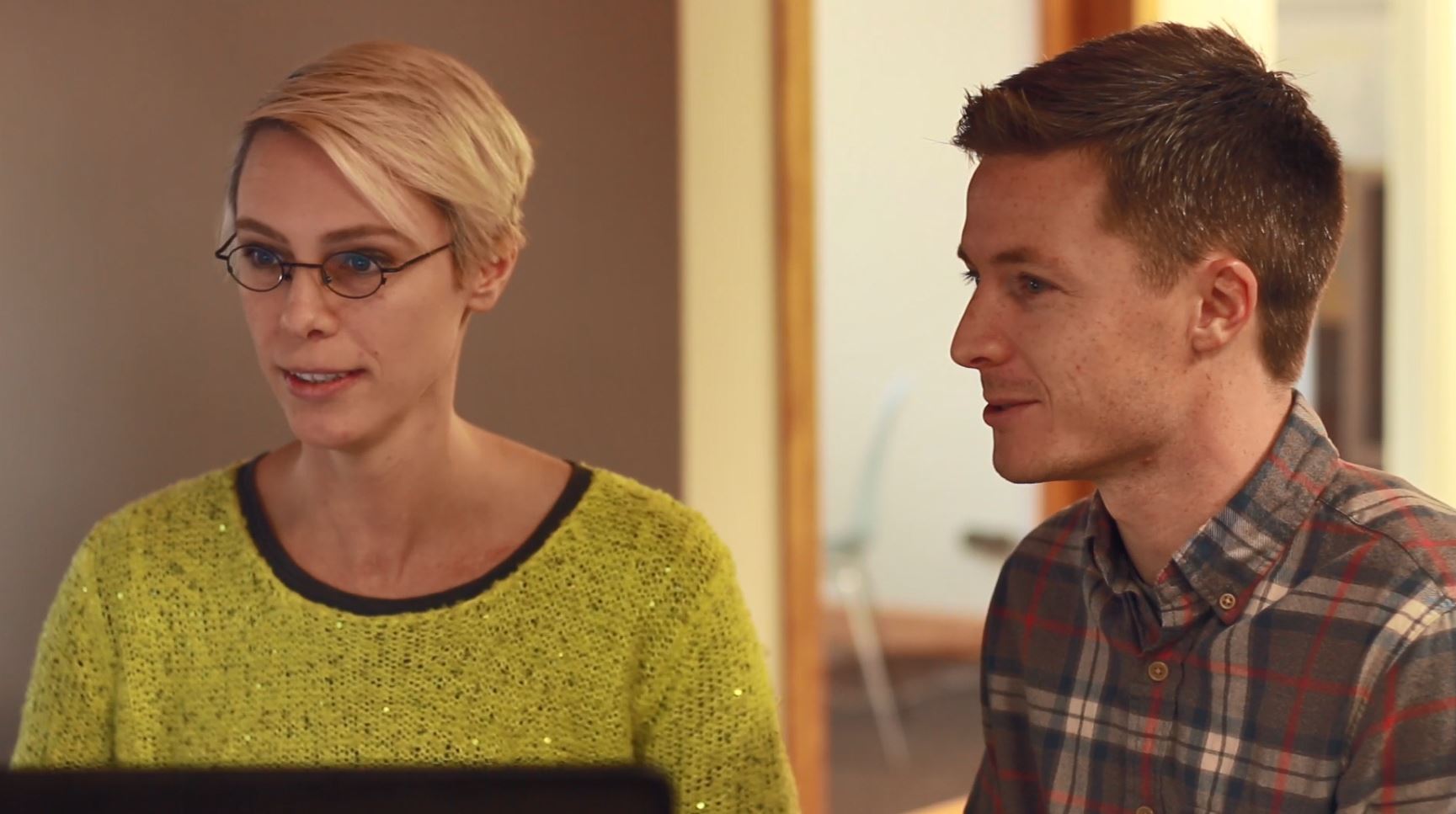We’ve made plenty of videos over the years, and while nearly all of them are good, some of them turned out great. So it got me thinking…what are the ingredients for a great video and how do we replicate that recipe every time?
I went out and spoke with our producers and creatives to get their insights on what takes a business video from good to great.

Theresa, one of our Producers, says it’s simple,
“Video production works best when you’re open-minded.”
When you’re open-minded, you become more open to creative ideas and you become someone that everyone can trust (because you’re not quick to turn something down). On top of that, you’re open to the idea of giving away ownership, which is something we talk more about.
After having all these enlightening conversations, I discovered is that the difference between a good and great video has everything to do with balancing constraint and freedom.
Apply Constraints
1. A clear and focused objective
For starters, the purpose of the video should be crystal clear and focused in its objective. It sounds obvious, but it’s much more difficult in practice. The temptation is to always do more, not less. But every great video we’ve ever had the pleasure of working on has always had a well defined goal.
The reason why this is important is because you want your team to be focused, and you also don’t want your potential customers to walk away feeling confused on what your video was about. Great marketing happens when your customers understand exactly what and who you are. It helps them identify with your brand or learn how your business provides a solution to their problem.
Here’s what our Creative Lead, Colin, had to say about how having clear goals makes a great video:
“By nailing the first few deliverables and getting prompt feedback, it’s easy to get the project started on a strong note. That positivity is the foundation of the rest of the video production process. It helps us move briskly, creatively, and happily along until the very end.”
2. Narrow and specific audience
Next, the audience must be narrow and specific. If your video is made for everyone, it won’t reach anyone. The best videos have a hyper-targeted audience in mind from the get-go.
Having a single audience helps with distribution on your side too. If you know exactly who you’re talking to, you know exactly what channels you should utilize. Aiming for a young, hip audience? Post it to Instagram. Targeting professionals looking to do their jobs better? Add it to LinkedIn. If you have a particular audience, you can spend time learning why they use the media channels that they do.
If you really, really want to reach multiple audiences or meet multiple objectives consider a series. In our work with the large home improvement company, Lowe’s, they wanted buying guide videos that shared easy DIY projects for everyday homeowners. The end project was an animated video series where one video targeted environmentally-conscious homeowners with Energy Star Projects, and another to people that love homebody hobbies with quick lighting tips.
3. A small, well aligned team
The final constraint required for a great video is a small, well aligned team. We typically recommend our clients assemble an internal team of no more than three people. Any more than three, and you’ll find you likely have too many cooks in the kitchen to align on a singular objective and a focused audience.
We know that with the more people you bring to the brainstorm, higher the potential of producing great ideas (trust us, great ideas are what we do). Even though this is true, it’s hard to manage all those personalities and schedules. Video production is already on a tight deadline and the more elements you introduce to the project, the harder it will be to meet them.
With the proper constraints in place, you should be able to put together a creative brief that conveys only the information required. Honestly, the briefer the brief, the better your video team will be positioned to succeed.
To stay brief, we recommend that you state only your objectives, target audience, a list of key benefits that your product or services provides, and a call-to-action. This not only makes everything clear to your team and partners, but reminds everyone of the desired action you want viewers to make. If there isn’t a call to action, there isn’t a way to measure the success of your video (and prove your ROI).

Let There Be Freedom
And that’s where freedom comes in. Okay, not quite patriotic, bald eagle freedom, but creative freedom. Assuming you’ve hired have a video team you trust, the best thing you can do is set them free.
Everyone I spoke with while researching for this piece said the same thing – they do their best work when they’re given the freedom to take control.
With freedom comes ownership, and when your creative team makes your project their own, it quickly moves up their priority list and becomes their little pet project. It’s no longer a work for hire, it’s something they’re fully invested in. That’s when business videos go from good to great.
Our partners over at the Zublime talk about what creative freedom means to them: “The key for video greatness is the freedom we are given by the client… each project is unique and must always create new methods to reach the desired result.”
Recap
I realize letting go can be scary, but time and again we find that true creative freedom, within the proper constraints, leads to the best results. So, if you’re looking to take your video from good to great, set the constraints, then set your team loose.
